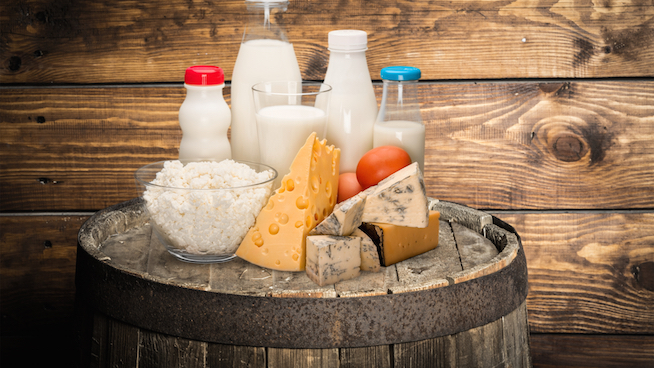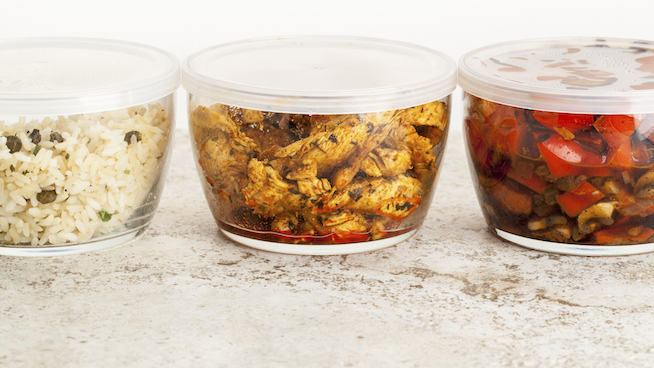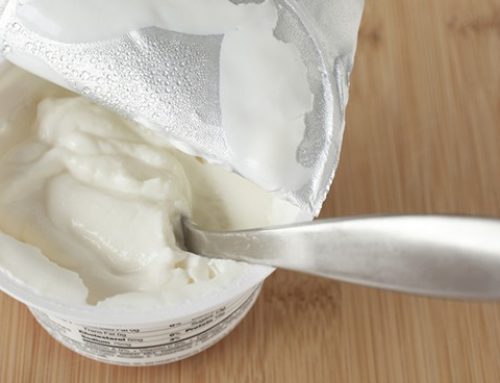Is The FDA’s New Nutrition Label Any Good? Expert Nutritionists Weigh In
The nutrition label will never be the same again.
According to a recent FDA announcement, after remaining largely unchanged for the past 20 years, the nutrition label will be modified in time to hit store shelves in 2018. The FDA is hoping that the new label better reflects our modern knowledge of nutrition and will help consumers make healthier choices.
First Lady Michelle Obama expressed her excitement about the new labels and their potential to help Americans eat a smarter diet. “I am thrilled the FDA has a new and improved Nutrition Facts label that will be on food products nationwide,” Obama said. “This is going to make a real difference in providing families across the country the information they need to make healthy choices.”
That all sounds great, but can the new label really help Americans clean up their diets? With the help of some of our nutrition experts, STACK took a closer look at the changes.
The Changes

Before we analyze the new label, let’s first summarize how it differs from the current one. Here are the major changes gleaned from the FDA’s official press release:
- Bigger type face for calories, servings per container and serving size
- Listing of “added sugars” in both grams and percent daily value
- Updated values for nutrients like sodium, fiber and vitamin D, which are consistent with the modern Institute of Medicine recommendations
- Vitamins A and C will no longer be required to be listed on the label since these deficiencies are rare. On the flip side, vitamin D and potassium will be listed since these deficiencies have become common in modern American society
- No longer will a “calories from fat” listing be required, since we now know that the type of fat in a product is more important than the overall amount
What’s Good

The new requirement to list added sugars drew a big thumbs up from our experts.
Added sugars are sugars that were added during the manufacturing process and do not naturally occur within the food. “I like the change to show added sugars because they are the sugars that most people should be focusing on each day, as opposed to the naturally occurring sugars in [foods like] carrots and apples,” said Ryan Andrews, nutrition coach at Precision Nutrition. The American Heart Association recommends that women consume less than 100 calories of added sugar per day (about 24 grams) and men less than 150 calories per day (about 36 grams). The average American overshoots those targets by a mile, consuming an average of 88 grams (equivalent to 22 teaspoons) per day.
Added sugars have become incredibly common in highly processed foods, because they’re a cheap and convenient way to make them taste better. “I love the info on added sugars so consumers can distinguish between [the sugar in] a piece of fruit and [the sugar in] fruit snacks, for example,” said Leslie Bonci, RD and owner of Active Eating Advice.
RELATED: Americans Get Over Half Their Calories From Ultra-Processed Foods
The updated serving sizes also met with a positive response. Serving sizes on the new labels will more accurately represent the amount the average American eats. The hope is that this will limit manufacturers’ abilities to stealthily manipulate the serving size in an effort to make their product appear more nutritious. For example, a 20-ounce bottle of soda has long carried a nutrition label with an 8-ounce serving size. That’s insane, because nearly everyone who buys a 20-ounce bottle of soda consumes it in one sitting. Other frequent offenders of unrealistically small serving sizes include breakfast cereals, ice cream and canned soup. The requirement for more realistic serving sizes should help people better know what they’re consuming. “I love the bold, in-your-face info on servings per container and serving size. If you don’t heed the serving size, you’re going to exceed your needs,” Bonci said.
RELATED: Don’t Get Tricked By These 6 Foods With Wildly Unrealistic Serving Sizes
It’s also helpful that the new labels list the amount of vitamins and minerals instead of just their daily value percentage. “Showing the actual amount of vitamins and minerals [is beneficial], because the percentage of daily value isn’t useful to most people,” Andrews said. Why? Because the daily value is calculated off a 2,000 calorie-per-day diet. Why 2,000 calories? According to The Calorie Control Council, that is “the amount of calories a moderately active adult female (weighing approximately 132 pounds) would need to maintain her weight.” Obviously, the 2,000 calorie-per-day guideline and the daily values based upon it are unrealistic for many people. Having the actual amounts of vitamins and minerals listed in milligrams, micrograms, etc. should help those people get a better idea of what they’re consuming.
Making the listing of vitamin D and potassium amounts mandatory is another smart move, as the modern American diet is often lacking in both of those important nutrients. Vitamin D can be especially elusive, and even elite athletes with well-balanced diets often come up short. For example, over 50 percent of the New York Giants roster was found to have a vitamin D deficiency in 2014.
Where There’s Still Room For Improvement

Though most of the changes are steps in the right direction, there are still some areas for improvement.
“I think the label is still too busy. Color coding would be helpful,” Bonci said. The new label is still the basic white-and-black design, which makes it impossible to gauge a food’s nutritional value at a glance. A color coded label—such as this one from designer Dylan Brown—could help consumers get instant feedback from the label.
Andrews would like to see more information about how and where the food was produced required on the label. “I’d like to see more information about carbon footprint, country of origin, water use, farm labor conditions and animal welfare standards,” Andrews said. “I think if more people had access to this kind of information when selecting foods, they’d be willing to make some modifications.” Mock-ups of such a design exist, such as this one from The Food Futurist.
The Verdict

The new label includes some smart changes that better reflect our modern knowledge of nutrition, but will it really help people eat healthier? Our experts are not overly optimistic.
“I do think the labels are another step in helping to educate, but they’re only useful if they’re looked at. Because they’re usually on the side or the back of packaging, consumers don’t always look at that info when zooming through the supermarket,” Bonci said. “Having it on the front of a package would be ideal, but if not, at least call out key info on the front such as calories, servings, servings per container and added sugars.”
“Only a small percentage of the population finds nutritional data constructive in their decision-making process around food. For the vast majority of the population, knowing a few more food label numbers won’t go very far,” Andrews said.
Will the new nutrition label suddenly make every American eat a well-balanced diet? Of course not. But it is a useful source of information and data that can be used to inform the decisions of people looking to eat healthier.
RECOMMENDED FOR YOU
MOST POPULAR
Is The FDA’s New Nutrition Label Any Good? Expert Nutritionists Weigh In
The nutrition label will never be the same again.
According to a recent FDA announcement, after remaining largely unchanged for the past 20 years, the nutrition label will be modified in time to hit store shelves in 2018. The FDA is hoping that the new label better reflects our modern knowledge of nutrition and will help consumers make healthier choices.
First Lady Michelle Obama expressed her excitement about the new labels and their potential to help Americans eat a smarter diet. “I am thrilled the FDA has a new and improved Nutrition Facts label that will be on food products nationwide,” Obama said. “This is going to make a real difference in providing families across the country the information they need to make healthy choices.”
That all sounds great, but can the new label really help Americans clean up their diets? With the help of some of our nutrition experts, STACK took a closer look at the changes.
The Changes

Before we analyze the new label, let’s first summarize how it differs from the current one. Here are the major changes gleaned from the FDA’s official press release:
- Bigger type face for calories, servings per container and serving size
- Listing of “added sugars” in both grams and percent daily value
- Updated values for nutrients like sodium, fiber and vitamin D, which are consistent with the modern Institute of Medicine recommendations
- Vitamins A and C will no longer be required to be listed on the label since these deficiencies are rare. On the flip side, vitamin D and potassium will be listed since these deficiencies have become common in modern American society
- No longer will a “calories from fat” listing be required, since we now know that the type of fat in a product is more important than the overall amount
What’s Good

The new requirement to list added sugars drew a big thumbs up from our experts.
Added sugars are sugars that were added during the manufacturing process and do not naturally occur within the food. “I like the change to show added sugars because they are the sugars that most people should be focusing on each day, as opposed to the naturally occurring sugars in [foods like] carrots and apples,” said Ryan Andrews, nutrition coach at Precision Nutrition. The American Heart Association recommends that women consume less than 100 calories of added sugar per day (about 24 grams) and men less than 150 calories per day (about 36 grams). The average American overshoots those targets by a mile, consuming an average of 88 grams (equivalent to 22 teaspoons) per day.
Added sugars have become incredibly common in highly processed foods, because they’re a cheap and convenient way to make them taste better. “I love the info on added sugars so consumers can distinguish between [the sugar in] a piece of fruit and [the sugar in] fruit snacks, for example,” said Leslie Bonci, RD and owner of Active Eating Advice.
RELATED: Americans Get Over Half Their Calories From Ultra-Processed Foods
The updated serving sizes also met with a positive response. Serving sizes on the new labels will more accurately represent the amount the average American eats. The hope is that this will limit manufacturers’ abilities to stealthily manipulate the serving size in an effort to make their product appear more nutritious. For example, a 20-ounce bottle of soda has long carried a nutrition label with an 8-ounce serving size. That’s insane, because nearly everyone who buys a 20-ounce bottle of soda consumes it in one sitting. Other frequent offenders of unrealistically small serving sizes include breakfast cereals, ice cream and canned soup. The requirement for more realistic serving sizes should help people better know what they’re consuming. “I love the bold, in-your-face info on servings per container and serving size. If you don’t heed the serving size, you’re going to exceed your needs,” Bonci said.
RELATED: Don’t Get Tricked By These 6 Foods With Wildly Unrealistic Serving Sizes
It’s also helpful that the new labels list the amount of vitamins and minerals instead of just their daily value percentage. “Showing the actual amount of vitamins and minerals [is beneficial], because the percentage of daily value isn’t useful to most people,” Andrews said. Why? Because the daily value is calculated off a 2,000 calorie-per-day diet. Why 2,000 calories? According to The Calorie Control Council, that is “the amount of calories a moderately active adult female (weighing approximately 132 pounds) would need to maintain her weight.” Obviously, the 2,000 calorie-per-day guideline and the daily values based upon it are unrealistic for many people. Having the actual amounts of vitamins and minerals listed in milligrams, micrograms, etc. should help those people get a better idea of what they’re consuming.
Making the listing of vitamin D and potassium amounts mandatory is another smart move, as the modern American diet is often lacking in both of those important nutrients. Vitamin D can be especially elusive, and even elite athletes with well-balanced diets often come up short. For example, over 50 percent of the New York Giants roster was found to have a vitamin D deficiency in 2014.
Where There’s Still Room For Improvement

Though most of the changes are steps in the right direction, there are still some areas for improvement.
“I think the label is still too busy. Color coding would be helpful,” Bonci said. The new label is still the basic white-and-black design, which makes it impossible to gauge a food’s nutritional value at a glance. A color coded label—such as this one from designer Dylan Brown—could help consumers get instant feedback from the label.
Andrews would like to see more information about how and where the food was produced required on the label. “I’d like to see more information about carbon footprint, country of origin, water use, farm labor conditions and animal welfare standards,” Andrews said. “I think if more people had access to this kind of information when selecting foods, they’d be willing to make some modifications.” Mock-ups of such a design exist, such as this one from The Food Futurist.
The Verdict

The new label includes some smart changes that better reflect our modern knowledge of nutrition, but will it really help people eat healthier? Our experts are not overly optimistic.
“I do think the labels are another step in helping to educate, but they’re only useful if they’re looked at. Because they’re usually on the side or the back of packaging, consumers don’t always look at that info when zooming through the supermarket,” Bonci said. “Having it on the front of a package would be ideal, but if not, at least call out key info on the front such as calories, servings, servings per container and added sugars.”
“Only a small percentage of the population finds nutritional data constructive in their decision-making process around food. For the vast majority of the population, knowing a few more food label numbers won’t go very far,” Andrews said.
Will the new nutrition label suddenly make every American eat a well-balanced diet? Of course not. But it is a useful source of information and data that can be used to inform the decisions of people looking to eat healthier.












